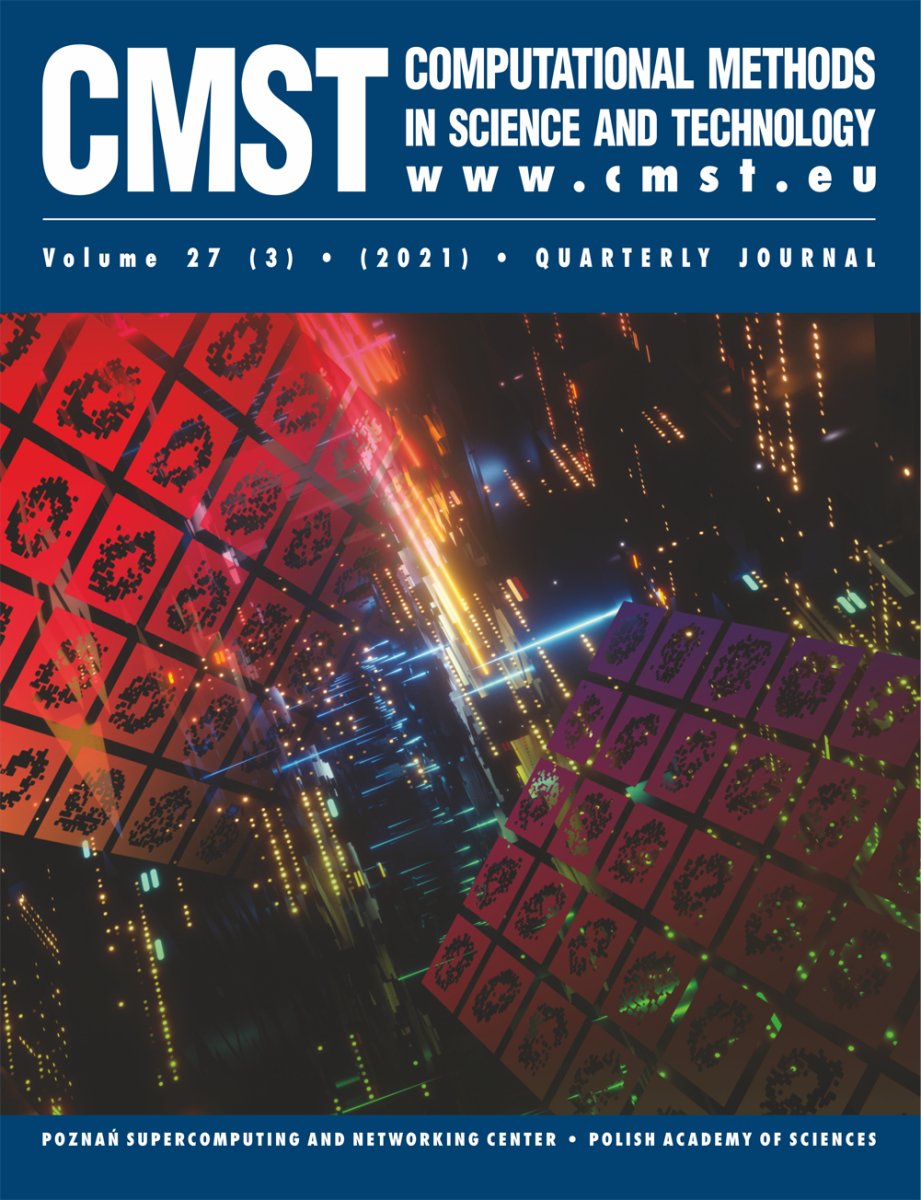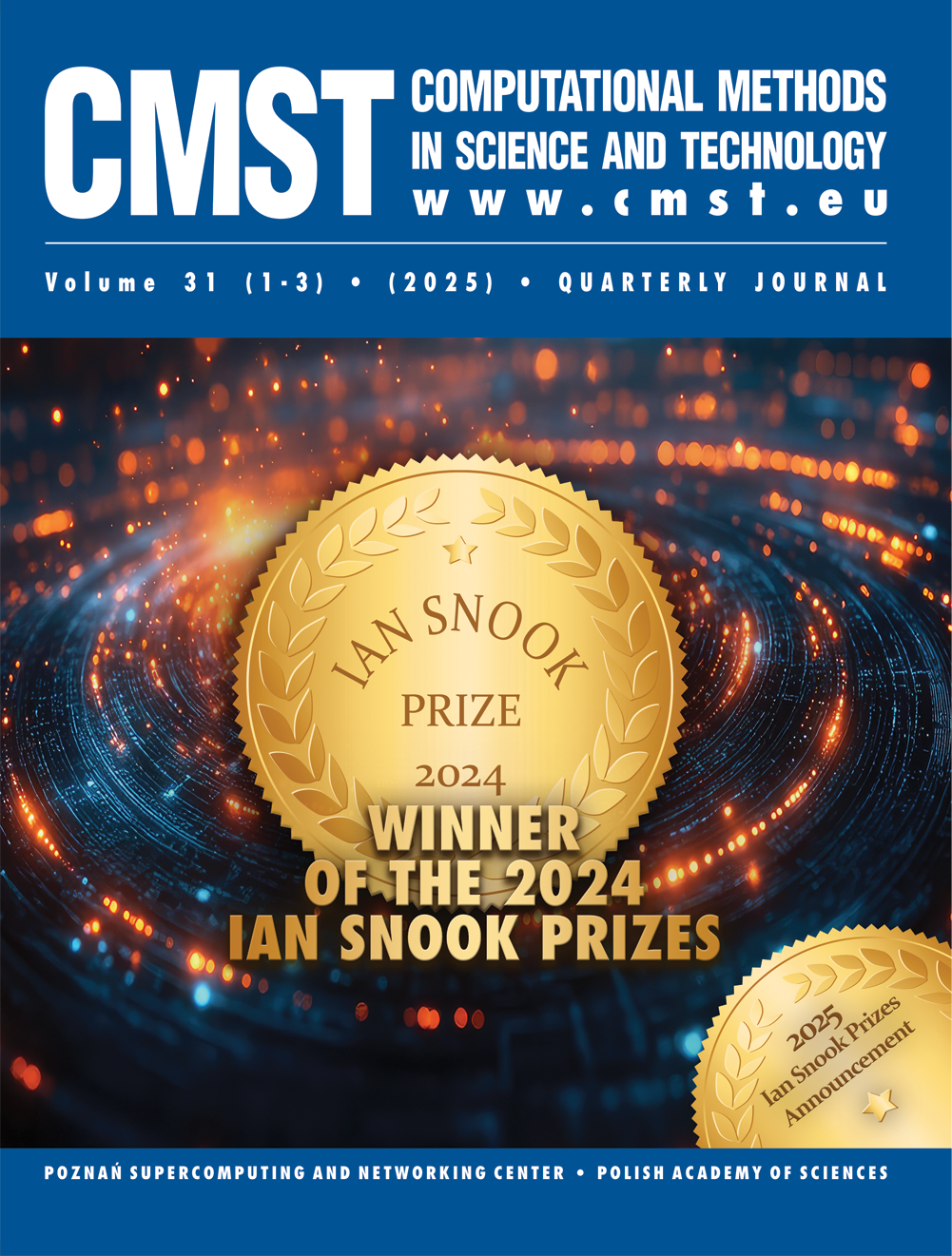COMPUTER-AIDED ASSESSMENT OF EYE-HAND COORDINATION IN CHILDREN WITH MILD MENTAL RETARDATION: A POSSIBLE APPLICATION AS A SCREENING TEST
Kowalska P. 1, Krzywińska-Wiewiórowska M. 2, Kamieniarz M. 3, Krzyżaniak A. 2, Kamieniarz Grzegorz 1
1 Computational Physics Division, Departament of Physics,
Adam Mickiewicz University, Poznań, Poland
2Departament of Epidemiology, Chair of Social Medicine
Karol Marcinkowski University of Medical Sciences, Poznań, Poland
3Clinic of Rehabilitation, Karol Marcinkowski University of Medical Sciences, Poznań, Poland
DOI: 10.12921/cmst.2002.08.02.27-36
OAI: oai:lib.psnc.pl:533
Abstract:
Making use of the earlier designed computer tests assessing the hand dexterity, a study was performed in which the time of task completion was measured in a group of 88 mentally impaired children aged 7-15 and a group 86 of control children. All the children were also asked to take two types of psychological tests: Wechsler test subscales blocks and puzzles and Bender-Santucci test. Results of the computer tests discriminate these groups of children, indicating statistically significant differences between the corresponding mean values. The values of the Pearson coefficient (0.35 ≤ rp ≤ o.57) for the control group point to a relatively high correlation between the computer test results and those of psychological tests. The sensitivity and specificity analysis is also presented to show that the computer tests fulfil the criteria for a screening test.
References:
[1] M. Kamieniarz et al., Post. Rehabil., 15, 23 (2001).
[2] M. Kamieniarz, W. Stryła, P. Kowalska, G. Kamieniarz, Standardised Computer Tests for
Assessment of the Children Hand Dexterity, lst World Congress of the International Society of
Physical and Rehabilitation Medicine (ISPRM I), eds. Peek W. J and Lankhorst G. J., Monduzzi
Editore, Bologna 2001.
[3] M. Kamieniarz et al., Comp. Meth. Sci. Tech., 8, 1 (2002).
[4] G. Gollnitz, Psychiatr. Neurol. Med. Psychol. Beib. 13-14, 49 (1970).
[5] G. Neuhauser, Fortschr. Med. 93(25), 1159 (1975).
[6] D. Stomma, Upośpledzenie umysłowe. W: Neurologia dzieciąca, ed. J. Czochańska, Warszawa, PZWL, 203 (1985).
[7] B. Woynarowska, Testy przesiewowe u dzieci i młodzieży w wieku przedszkolnym i szkolnym, Instytut Matki i Dziecka, Warszawa (1990).
[8] E. Hornowska, Testy psychologiczne, teoria i praktyka, Wydawnictwo Naukowe Scholar, Warszawa (2001).
[9] J. Brzeziński, E. Hornowska (ed.), Skala inteligencji Wechslera WAIS-R, Wydawnictwo Naukowe PWN, Warszawa (1993).
[10] A. Anastasi, S. Urbina, Testy psychologiczne, Pracownia Testów Psychologicznych Polskiego Towarzystwa Psychologicznego, Warszawa (1999).
[11] K. Sommerfelt et al., Pediatr. Neurol. 26(3) (2002).
[12] C. H. Hennekens, J. E. Buring, Epidemiology in Medicine, Little, Brown and Company, Boston-Toronto (1987).
[13] Z. J. Brzeziński, K. Szamotulska, Epidemiologia kliniczna, Warszawa, PZWL (1997).
[14] W. Jędrychowski, Epidemiologia wprowadzenie i metody badań, Warszawa, PWZL (1999).
Making use of the earlier designed computer tests assessing the hand dexterity, a study was performed in which the time of task completion was measured in a group of 88 mentally impaired children aged 7-15 and a group 86 of control children. All the children were also asked to take two types of psychological tests: Wechsler test subscales blocks and puzzles and Bender-Santucci test. Results of the computer tests discriminate these groups of children, indicating statistically significant differences between the corresponding mean values. The values of the Pearson coefficient (0.35 ≤ rp ≤ o.57) for the control group point to a relatively high correlation between the computer test results and those of psychological tests. The sensitivity and specificity analysis is also presented to show that the computer tests fulfil the criteria for a screening test.
[1] M. Kamieniarz et al., Post. Rehabil., 15, 23 (2001).
[2] M. Kamieniarz, W. Stryła, P. Kowalska, G. Kamieniarz, Standardised Computer Tests for
Assessment of the Children Hand Dexterity, lst World Congress of the International Society of
Physical and Rehabilitation Medicine (ISPRM I), eds. Peek W. J and Lankhorst G. J., Monduzzi
Editore, Bologna 2001.
[3] M. Kamieniarz et al., Comp. Meth. Sci. Tech., 8, 1 (2002).
[4] G. Gollnitz, Psychiatr. Neurol. Med. Psychol. Beib. 13-14, 49 (1970).
[5] G. Neuhauser, Fortschr. Med. 93(25), 1159 (1975).
[6] D. Stomma, Upośpledzenie umysłowe. W: Neurologia dzieciąca, ed. J. Czochańska, Warszawa, PZWL, 203 (1985).
[7] B. Woynarowska, Testy przesiewowe u dzieci i młodzieży w wieku przedszkolnym i szkolnym, Instytut Matki i Dziecka, Warszawa (1990).
[8] E. Hornowska, Testy psychologiczne, teoria i praktyka, Wydawnictwo Naukowe Scholar, Warszawa (2001).
[9] J. Brzeziński, E. Hornowska (ed.), Skala inteligencji Wechslera WAIS-R, Wydawnictwo Naukowe PWN, Warszawa (1993).
[10] A. Anastasi, S. Urbina, Testy psychologiczne, Pracownia Testów Psychologicznych Polskiego Towarzystwa Psychologicznego, Warszawa (1999).
[11] K. Sommerfelt et al., Pediatr. Neurol. 26(3) (2002).
[12] C. H. Hennekens, J. E. Buring, Epidemiology in Medicine, Little, Brown and Company, Boston-Toronto (1987).
[13] Z. J. Brzeziński, K. Szamotulska, Epidemiologia kliniczna, Warszawa, PZWL (1997).
[14] W. Jędrychowski, Epidemiologia wprowadzenie i metody badań, Warszawa, PWZL (1999).

